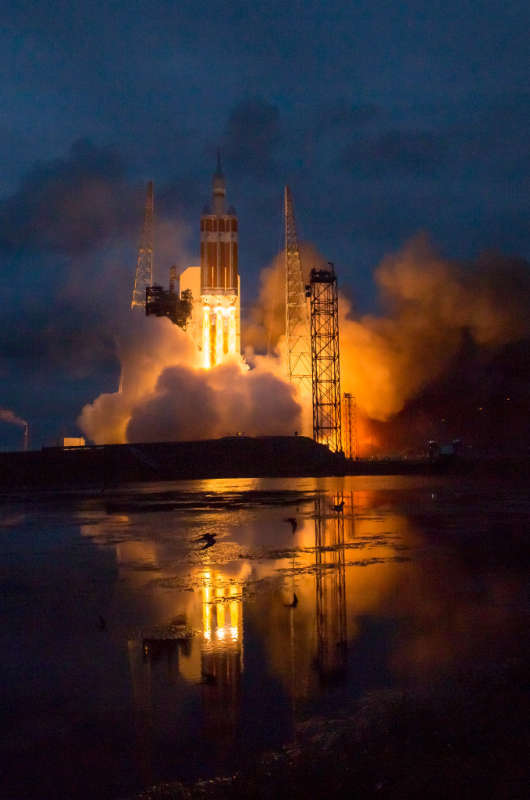Credit & Copyright: NASA, Bill Ingalls
Explanation:
Headed for two orbits of planet Earth and a splashdown in the Pacific,
Orion
blazed into the early morning sky on Friday at 7:05am ET.
The
spacecraft was launched atop a United
Launch Aliance Delta IV Heavy rocket from Cape Canaveral
Air Force Station in Florida.
Its first voyage
into space on an uncrewed flight test,
the Orion traveled some 3,600 miles from Earth, about 15 times higher
than the orbital altitude of the International Space Station.
In fact, Orion traveled
farther
into space than any spacecraft designed
for astronauts since the Apollo missions
to the Moon.
The Orion crew module reached speeds of 20,000 miles per hour
and temperatures approaching 4,000 degrees Fahrenheit
as it re-entered Earth's atmosphere about 4.5 hours after launch.
1999 2000 2001 2002 2003 2004 2005 2006 2007 2008 2009 2010 2011 2012 2013 2014 2015 2016 2017 2018 2019 2020 2021 2022 2023 2024 2025 |
Yanvar' Fevral' Mart Aprel' Mai Iyun' Iyul' Avgust Sentyabr' Oktyabr' Noyabr' Dekabr' |
NASA Web Site Statements, Warnings, and Disclaimers
NASA Official: Jay Norris. Specific rights apply.
A service of: LHEA at NASA / GSFC
& Michigan Tech. U.
|
Publikacii s klyuchevymi slovami:
spacecraft - launch - kosmicheskie korabli - zapusk
Publikacii so slovami: spacecraft - launch - kosmicheskie korabli - zapusk | |
Sm. takzhe:
Vse publikacii na tu zhe temu >> | |
